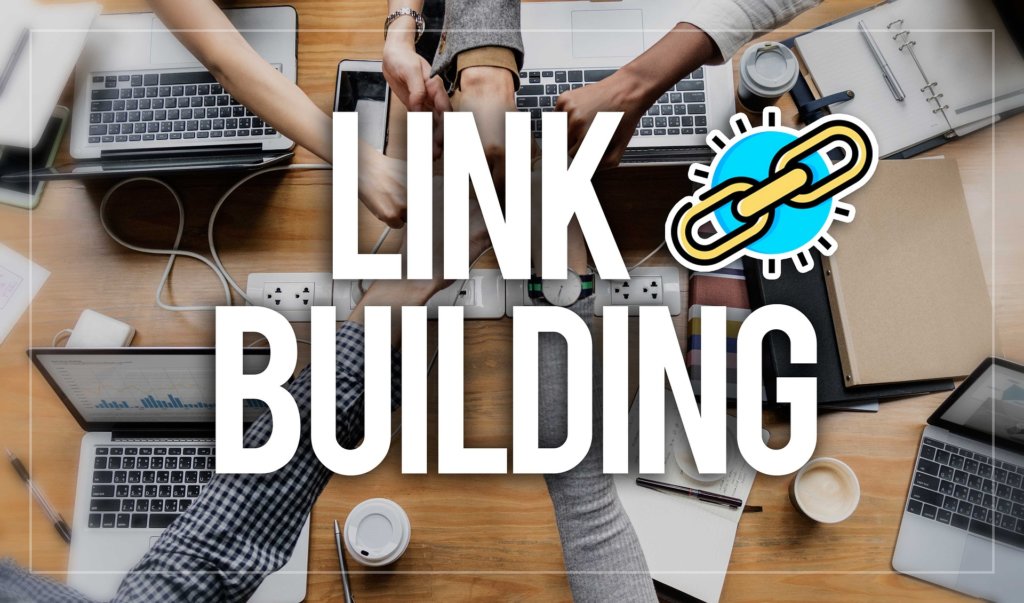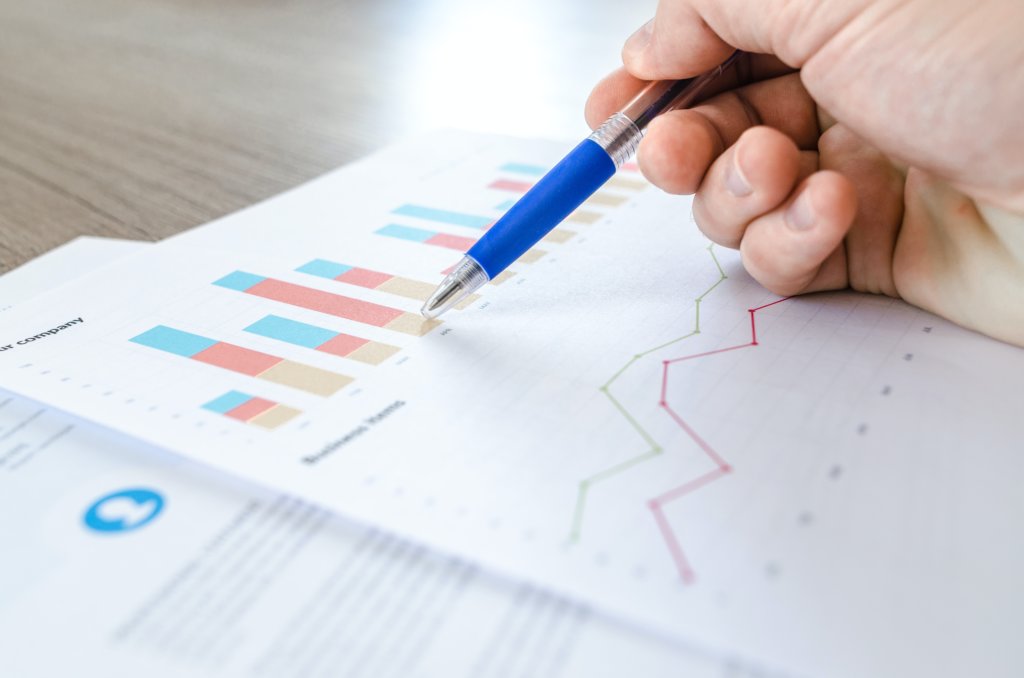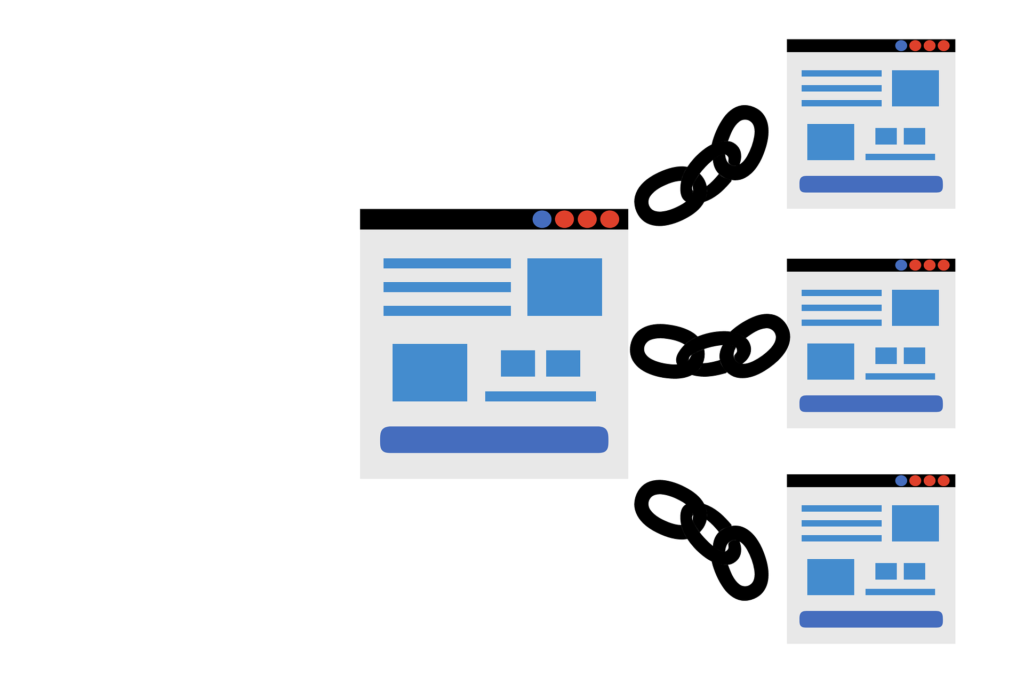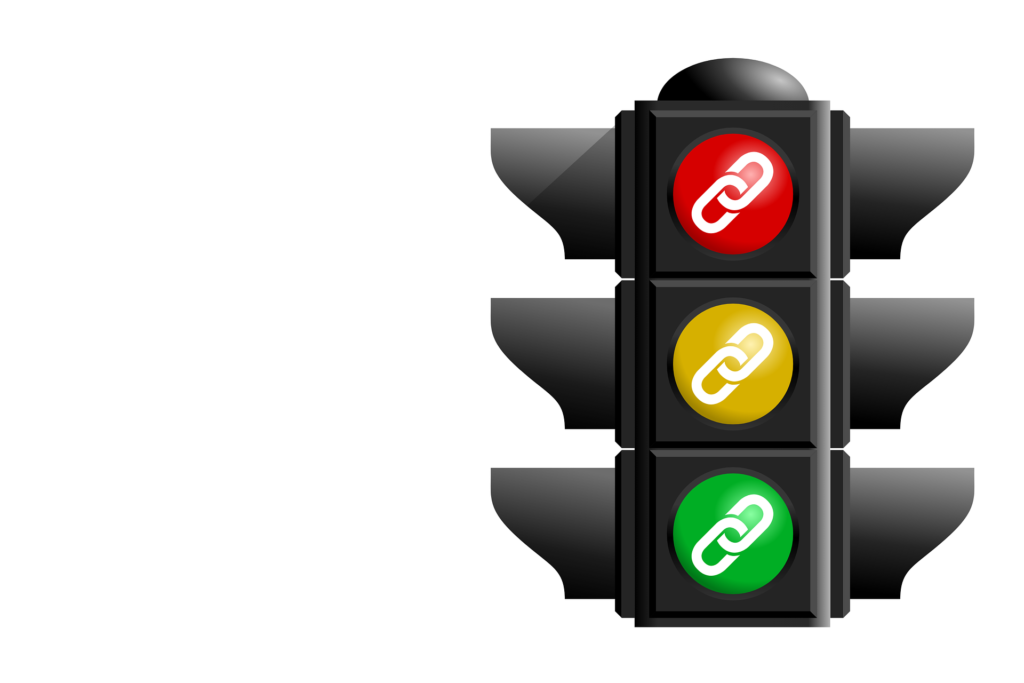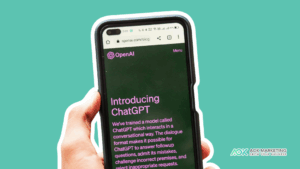Think link building is a thing of the past? Think again.
While the algorithms may have changed, the importance of links hasn’t. Links are more important than ever. So how do you go about building links in today’s world?
Here are a few tips to get you started.
Background on Link Building
Link building is earning links from other websites to your own.
Search engines like links because they are similar to votes. The more ballots (links) you have, the more favored your site is, and the higher it can go up in search engine results pages (SERPs).
However, not all votes (links) are created equal. The algorithm looks at the quality of the link and the quantity. In other words, it’s not just about getting as many links as possible but also about getting high-quality links from reputable websites.
Link building has come a long way since the starting days of the internet. In the early days, link building was all about quantity, and the more links you had, the better. This method led to a lot of link spam, as people tried to game the system.
Google has since come out with many updates that have punished sites engaging in link spam. As a result, link building has evolved, and now the focus is placed on quality over quantity.
Types of Links
In the online marketing world, links also have subtypes, and you can check them out below.
Editorial Links (the most important kind)
These are links that are given by one website to another. In other words, someone on the website staff has decided to link to your site because they think it’s a good resource.
This link is unique because it shows that someone else in the industry (a human, not a bot) has looked at your site and thinks it’s worth linking to.
These are the most challenging links because you can’t just ask for them. You have to earn them. And there are some ways to do this:
1. Write great content that other people will want to link to
2. Reach out to other websites and let them know about your content
3. Promote your content on social media and other online channels
User-generated Links
These are links that users generate rather than website owners or editors.
An example of this would be a link in a forum post or a blog comment.
While user-generated links are not as valuable as editorial links, they can still help boost your link profile and overall ranking.
Nofollow & Dofollow Links
When a link is nofollow, the link does not “count” as a vote for your website. And, it doesn’t help your link profile or SEO.
In general, editorial links are dofollow, while user-generated links are nofollow. Dofollow links, on the other hand, are links that “count” as a vote. These are the links you want because they will help improve your link profile and SEO.
Risky vs. Non-risky links
There are two types of links: risky and non-risky.
Risky links are the ones that can get you into trouble with Google. These are the links that link to spam or from low-quality websites.
Non-risky links, on the other hand, are links from high-quality websites that do not link spam. These are the links you want to focus on with your campaigns.
Sustainable links vs. one-time links
There are two types of link building: sustainable and one-time.
Sustainable link building is slowly and steadily building links over time. This method is the best way to make links because it’s natural and doesn’t put you at risk of Google penalties.
On the other hand, one-time link building is the process of building links all at once. This process is by link buying, link bait, or link spam. While this may seem like a good idea, it’s perilous because it can cause you trouble and penalties from Google.
And trust us, you don’t want to be on the wrong side of Google!
Branded Links
Branded links are links that contain your brand name. These are the kind of links you want because they help improve your link profile and SEO.
Examples of branded link building:
– Creating a blog and including links to your website in your posts
– Creating social media accounts and linking to your website in your profile
– Creating an email signature that links to your website
– Creating a linkable asset, such as an infographic, back to your website
Unlinked Brand Mentions
Unlinked brand mentions are mentions of your website or brand name that don’t include a link. When you come across these, you can try reaching out to the website owners and ask them to connect your links correctly.
Getting a link back to your website is critical to your backlinking strategy.
Researching link opportunities
The first step in link building is to research link opportunities. There are a few ways to do this:
– Use Google search operators to find link opportunities
– Check out your competitor’s link profiles
– Use link research tools
Find your REAL Competitors
Many individuals mistake thinking that their only competitors are the big players in their industry. However, this is not the case. Your real competitors are the ones who are ranking for the keywords that you want to rank for.
To find your actual competitors, you can use a tool like Moz’s Explorer. Just pop in a keyword that you want to rank for, and it will show you an inventory of websites that are ranking for that particular keyword.
Understand what Types of Links you Need
Once you’ve found your link opportunities, it’s time to understand what types of links you need. Acquiring links to your platform from other websites is helpful because it makes people know about your website. It also helps your website’s ranking on Google and other search engines.
Link Profiling
When you’re link building, you want to focus on getting high-quality links from websites relevant to your niche. Link profiling is examining a link to determine its quality. You can do this manually or with link research tools.
Top Content
If you want to get links from high-quality websites, you need to create high-quality content. Top content means that your content needs to be better than your competitors’ content.
There are a few ways to make sure that your content is high quality:
– Research your topic thoroughly
– Use data and statistics to back up your claims
– Write in a clear and concise manner
– Edit your work thoroughly
– Publish your content regularly
Keywords
When you’re link building, you need to focus on getting links from websites highly relevant to your niche. This means that you need to use relevant keywords in your link-building efforts.
There are a few ways to use keywords when link building:
– Use keyword-rich anchor text
– Use keywords in your link bait
– Use keywords in your blog posts and articles
– Use keywords in your social media profiles
Broken Links
These kinds of links are links that lead to pages that no longer exist. When you’re link building, you want to avoid broken links because they can damage your link profile and SEO.
There are a few ways to find broken links:
– Use Google search operators
– Use link research tools
– Manually check your competitor’s link profiles
– Check your website links and profile
Link Growth
Link growth is a method to slowly and steadily increase the number of links to your website. This can be done by:
– Creating high-quality content
– Promoting your content
– Doing link outreach
– Creating linkable assets
– Participating in link roundups
Strategy
Link building is a long-term strategy which means that you need to be patient and consistent in your efforts.
Additionally, you also need to diversify your link sources which imply that you should get links from a variety of websites, including:
– Social media profiles
– Guest posts
– Forum signatures
– Blog comments
– Resource pages
– Infographics
– Directory listings
– Local citations
Link Building Goals
The purpose of link building is to increase the visibility of your website and improve your search engine rankings.
To achieve these goals, you need to acquire high-quality links from relevant websites. You also need to create high-quality content and participate in link-building activities regularly.
How many links do we need to rank?
There is no magic number of links for your website to rank.
However, the more links you have from high-quality websites, the better your chances of ranking well on Google.
What kind of links do you need?
You need to get high-quality links from relevant websites to succeed with link building, as discussed regularly. You also need to create quality content and participate in link-building activities regularly.
Do you need nofollow and branded links?
No. You don’t need nofollow or branded links to succeed with link building. However, these links can help diversify your link profile and improve your search engine rankings.
Anchor Text & Landing Page Distribution
An anchor text is the highlighted hyperlinked text in your website that leads to another page or another website.
When link building, you need to use keyword-rich anchor text as this will help you rank higher on Google for your target keywords.
Do you need a wide enough range of anchor text and landing pages?
Yes! You also need to make sure that your link-building efforts are diversified, which means that you should have a mix of links with different anchor texts pointing to varied landing pages on your website.
Link Placement & Positioning
As futile as it may seem, your link’s placement and position also matter when link building.
You want your link placed in the body of the text and close to the top of the page, as this is the part where your audience’s interest is at its peak.
Sourcing Links
There are a variety of ways to source links. You can use link research tools, search Google, or reach out to website owners directly.
Whatever strategy you use, ensure that you are doing it the correct way to avoid penalties from Google.
Content & Link relevancy
When link building, you need to make sure that your links are relevant to your website and content. The website you aim to backlink from should be of the same niche and topic as your website.
What assets can we use/create?
There are many linkable assets that you can use to build links.
These include:
– Resource pages
– Infographics
– Directory listings
– Local citations
Creating linkable assets is a great way to build links. Not only do you get the link, but you can also get traffic from the website which links back to you.
How long will it take?
Link building is a long-term strategy. It can take months or even years to see the results of your efforts. However, link building is a critical part of SEO and should be done regularly to see the most promising results.
Use a geographic modifier in your link-building strategy.
If you want to target a specific region with your link building, you need to use a geographic modifier. This text tells Google that you wish your website to be associated with a particular location.
For example, if you want to target a link building in London, you would use the geographic modifier “link building in London.”
This method is a great way to target link building in a specific city or region. It ensures that your link-building efforts are focused, and you are more likely to see results from your efforts.
Buying Domains
There are several domain acquisition methods for link development. Buying domains is an excellent approach to obtaining relevant websites to give you high-quality links.
The link acquisition process can be difficult and time-consuming, but it’s worth it to buy domains that will give you strong links, and you can acquire some domains from the following:
2.Auctions
Adding LLC or Inc to Your Domain Name
When link building, you want to add LLC (Limited Liability Company) or Inc (Incorporated) to the domain name. This will help you get links from websites relevant to your business.
For example, if you are link building for a law firm, you want to add “LLC .” This method will ensure that you will get relevant links and can build link equity along the way.
Try Alternative TLDs (Top-Level Domains)
An alternative TLD is a domain that is not so mainstream like .com.
Alternative TLDs can be great for link building because they are often less competitive and give you an edge over your competitors; they can be more affordable.
Some of the best alternative TLDs for link building include:
1. .net
2. .co
3. .biz
4. .info
These TLDs can be an unpopular choice but are also great for link building.
Negotiate to buy the taken domain
If the domain you want is already taken, you can try to negotiate with the owner and buy it from them. This might be a fantastic approach to get the domain you desire and a link from the website.
You need to find the domain owner’s contact information and reach out to them to do this. You can try using a Whois search to find the owner’s contact information.
Once you have the contact information, you can reach out and try to negotiate a price for the desired domain.
Link Building Tactics
There are various link-building tactics that you can employ, and the best approach will vary depending on your industry and audience.
However, common link-building strategies include guest blogging, linkbait, and directory submissions. So if you’re looking to boost your SEO game, check out some of the best practices below.
Linkbait
Linkbait is a link-building strategy that creates content that is so link-worthy that other websites are compelled to link to it. This content can be in the form of a blog post, infographic, or video.
Content-based link building
Content-based link building is a great way to get high-quality links. This strategy involves creating link-worthy content and then promoting it to other websites.
You need to create great and link-worthy content and promote it on social media, forums, and other channels. Once you have promoted your content, you can reach out to other websites and ask them to link to your content.
This is a terrific way to get high-quality links because you only get links from websites appropriate to your industry.
Guest blogging (no, it’s not dead!)
Guest blogging is a link-building strategy that involves writing blog posts for other websites in your industry. This is a great way to get high-quality links because you only get links from websites applicable to your industry.
It would help if you found websites that accept guest blog posts and then pitched them a topic you would like to write about. Once your guest blog post is published, you will then have a link back to your website.
Link reclamation
Link reclamation is a link-building strategy that involves finding links pointing to your website but not working.
To do this, you need to find websites that link to your website but are not working. Once you have found these websites, you can then reach out to the website owner and ask them to update the link.
Broken link building
Broken link building is a link-building strategy that involves finding broken links on other websites and then replacing them with your link.
Why You Should Use Broken Link Building as Part of Your Link Building Strategy
There are many reasons why you should use broken link building as part of your link-building strategy.
First, it’s a significant way to get high-quality links. When you substitute a broken link with your link, you only get links from websites appropriate to your niche and business.
Second, it’s a beautiful way to build relationships with other website owners. When you reach out to website owners to let them know about a broken link, you create a relationship with them.
Lastly, it’s a great way to get your website noticed. When you replace a broken link with your link, you get your website seen by the website owner and by the people visiting it. Double whammy, right?
How to Find Broken Link Building Opportunities and Turn Them Into Links
To do broken link building, you need to find websites with broken links and then contact the website owner to let them know.
Once the website owner has replaced the broken link with your link, you will have a link back to your website.
Here are some ways to find broken link building opportunities:
Find Dead Pages That are Being Linked To
The first way to find broken link-building opportunities is to find dead pages that are being linked to.
You can use Ahref’s link checker and input the website you are trying to probe for dead pages and links. You can then make a list of these links and contact the website owner to inform them and ask if you can have your links in there instead.
Recreate the Content That is Being Linked To
Another way of getting links is if you find a broken link, you can offer to recreate that piece of content instead of replacing it right away with a link to your website.
This will help promote a more solid relationship with the website owner and get the backlink you aim for.
Finding Contacts and Crafting the Perfect Broken Link Outreach Email
Once you’ve found the broken link, the next step is to find the website owner’s contact information so you can inform them and ask if they want to replace it with your link.
The best way to do this is to use a tool such as Hunter.io.
This will help you find the website owner’s email address so you can reach out to them or look it up manually if you have the time. Once you have the website owner’s email address, the next step is to craft the perfect outreach email.
Here is a template you can use:
Hi (name),
I recently browsed your website and noticed that you have a link to (website) on your (page). Unfortunately, it led to a dead page when I clicked on the link.
I have similar content on my website that I think your visitors would find helpful. If you’re interested, I can send you the link so you can replace the broken link with mine.
Thank you for your time, and I look forward to hearing from you.
(Your name)
Remember to be polite and professional in your email to build a good relationship with the website owner.
Internal Links
Internal links are hyperlinks that link to other pages on the same website. They are used to help website visitors navigate between pages on the site and can also be used by search engines to discover new content.
Understanding the Importance of Internal Links for SEO
Internal links are essential for two reasons:
First, they help search engines understand the structure of your website and how it is related to other websites. This is important for SEO because it allows search engines to crawl and index your website more effectively.
Second, internal links help to spread link equity (or link juice) around your website. This is important because it helps improve your website’s ranking in search engine results pages (SERPs).
Understanding the Different Types of Internal Links
There are several types of internal links:
• Anchor text links: These hyperlinks use keyword-rich anchor text to link to other pages on the same website or other sites.
• Image links: These hyperlinks use images to link to other pages on the same website.
• Navigational links: These hyperlinks link to other pages on the same website from the navigation menu.
• Footer links: These hyperlinks link to other pages on the same website from the footer.
How to Audit Your Site’s Existing Internal Links
It’s necessary to regularly audit your website’s internal links to ensure practicality and up-to-date. There are a few things you should look out for when auditing your site’s internal links:
1. Broken links: These are links that lead to pages that no longer exist.
2. Orphaned pages: These are pages that are not linked to any other pages on your website.
3. Redirects: These are links that lead to pages that have been redirected to other pages.
4. Duplicate content: This is content that is identical or very similar to other content on your website.
How to Improve Your Site’s Internal Links
There are a few things you can do to improve your site’s internal links:
• Add new internal links: You can add new internal links to your website by adding anchor text links, image links, navigational links, and footer links.
• Update existing internal links: You can update existing internal links by ensuring that they link to the most relevant pages on your website.
• Remove broken links: You can remove them from your website by redirecting them to other pages on your site.
• Add orphaned pages: You can add orphaned pages to your website by linking to them from other pages.
• Fix redirects: You can fix redirects by updating the links to point to the most relevant pages on your website.
• Remove duplicate content: You can remove the same content from your website by canonicalizing it or redirecting it to other pages.
How to Build Your Internal Linking Strategy
Building an effective internal linking strategy can be a bit tricky. Here are a few things to keep in mind:
1. Understand your website’s structure: You need to understand the design of your website before you can build an effective internal linking strategy.
2. Map out your website’s pages: Once you know the structure of your website, you can map out all of the pages on your site. This will help you know which pages are the most important and how they are related to each other.
3. Identify your website’s most important pages: After you’ve finished mapping out all of your pages, you can focus on the most crucial ones. These are the pages you want to focus on when building your internal linking strategy.
4. Decide how you want to link your pages: Once you have identified the most critical pages on your website, you need to decide how to connect them.
Buying links (NO NO NO – against Google’s guidelines!)
Some people may try to take shortcuts and buy links when link building. Warning though, this is a big no-no in the world of SEO!
Google’s Penguin algorithm is specifically designed to target and penalize websites that engage in spam and link buying. So, if you’re caught link buying, your website could be at risk of being penalized by Google.
In short, link buying is a black hat SEO tactic that you should avoid at all costs!
Link Removals
Link removals are removing links from your website that are considered to be low-quality or harmful. If you have been link-building using black hat tactics, then there’s a good chance you may have some wrong links pointing to your website.
If this is the case, you will need to remove these links, STAT.
Link removal can be a tricky and time-consuming process, but it’s necessary if you want to clean up your link profile.
How to make sure that your site’s issues are links-related.
If you think that your website may have some link-related issues, there are a few things you can do to check:
• Use a link checker tool: There are several link checker tools that you can use to scan your website for links. These tools will help you identify any link-related issues that may be present on your site.
• Check your link profile: You can check your link profile using Google Search Console. This will help you see which links are pointing to your website and whether or not they are from high-quality websites.
• Check your link-building tactics: If you have been link-building using black hat tactics, then there’s a good chance that you may have some link-related issues. You can check your link-building tactics by reviewing your link profile and looking for any unnatural or spammy links.
Link-related issues can cause your website to lose ranking in the search engines and even lead to penalties from Google.
Common misconceptions you should avoid when judging the impact of backlinks on SEO
There are a lot of misconceptions about backlinks and their impact on SEO. Here are a few of the most common misconceptions that you should avoid:
1. “Backlinks are the most important ranking factor”: This is a common misconception, but it’s not true. Backlinks are just one of many ranking factors.
2. “The more backlinks you have, the better”: This is also not true. It’s not about the number of backlinks but the quality.
3. “All backlinks are good”: This is not true. There are good backlinks and bad backlinks. Bad backlinks can harm your website’s SEO.
4. “You need to build backlinks to your website”: This is not necessarily true. In some cases, you may not need to build any backlinks to your website.
For example, if your website is already ranking well in the search engines, you may not need to build any backlinks, BUT it can be a helpful addition.
Keep these misconceptions in mind to create a strategy based on facts and avoid unnecessary mistakes.
How to shape a solid link removal strategy
When link building for SEO, it’s crucial to ensure that your acquiring links are high-quality and from reputable sources. However, links from low-quality or spammy websites can sometimes slip through.
If this happens, it’s essential to have a link removal strategy to get rid of these harmful links and protect your website’s SEO. There are a few different steps you can take to remove links:
1. Find the offending link and contact the website owner to ask them to remove it.
2. If you can’t get in touch with the website owner, or they refuse to remove the link, you can use Google’s Disavow Tool to tell Google to ignore the link.
3. If all else fails, you can try to deindex the offending link by asking Google to remove it from their search results.
How to improve the backlink data collection process
If you’re not collecting data on your link-building efforts, it’s impossible to know what’s working and what isn’t. The first step is to start tracking your link acquisition so that you can see what kind of progress you’re making.
There are a few different ways to do this:
1. Use a link-tracking tool like Monitor Backlinks to track your link-building progress and keep an eye on your link profile.
2. Check your website’s backlink data regularly using Google Search Console or a similar tool.
3. Use link analysis tools like Majestic SEO or AHREFS to deeply look at your link profile and see where you need to improve.
By tracking your link-building progress, you can ensure that you’re on track to reach your link-building goals.
Why do you need to re-crawl all collected backlink data?
When you’re link building, it’s essential to keep an eye on your link profile to ensure that your links are high quality and from trustworthy sources.
One way to do this is to re-crawl all of the links you’ve collected over time and check their link quality score.
If you see a sudden drop in link quality, it could indicate that your link-building efforts are not as effective as they used to be or that you are linked to low-quality websites.
Either way, it’s essential to stay on top of your link profile and ensure that your links are of the highest quality. Re-crawling link data can also help you to identify new link opportunities.
By keeping an up-to-date link database, you can quickly identify new link prospects and start building relationships with them.
Overall, re-crawling your link data is a valuable link-building tool that can help you keep track of your link profile and find new link opportunities.
Why do you need to find the genuine URLs of your backlinks?
The genuine URLs of your backlinks are essential for link building and SEO. You can check the link quality, link popularity, and link anchor text by finding these URLs.
All these factors influence your link-building and SEO strategy.
How to build a custom backlink classification model?
You need a bespoke backlink classification model if you’re serious about link-building and SEO.
This model will help you quickly and easily identify high-quality link prospects and track your link-building progress over time.
There are a few different factors that you need to take into account when building your model, including:
– The link source’s PageRank.
– The link target’s PageRank.
– The link target’s relevancy to your site.
– The link source’s authority.
– The link source’s trustworthiness.
– The link source’s relationship to your site.
You can use various data sources to help you build your model, including link directories, link analysis tools, and webmaster forums. Once you have your model made, you can use it to quickly and easily identify link prospects that meet your criteria.
When link building, it’s essential to focus on quality over quantity. A small number of high-quality links will always be more valuable than many low-quality links.
Why do you need to weigh and aggregate all negative signals?
There’s so much wrong information and poor advice about link development. For years it’s been a burning issue in the SEO community, from novices to experts chiming in on the finest strategies.
The problem is that link building is often misunderstood and mishandled. As a result, many people believe that link building is nothing more than a numbers game – the more links you have, the better your website will rank.
This statement couldn’t be further from the truth. In fact, like what we always tell you, link building is more about quality than quantity. A handful of high-quality connections is worth far more than numerous low-quality ones.
So, how can you tell the difference between high-quality and low-quality links? Below are a few key indicators:
• The link is from a relevant source: A link from a website that is not related to your own will not be as valuable as a link from a website in the same industry or covers similar topics.
• The link is from an authoritative source: In addition to being relevant, the website linking to you should also be seen as an authority on the topic. This can be measured by things like domain authority and link popularity.
• The link is from a trusted source: Trust is another vital factor when assessing link quality. A link from a website that is not authorized by search engines will not be as valuable as a link from a site that is trusted.
How to measure success after having removed/disavowed links?
There are a few key indicators you can use to measure success after link removal/disavowal:
Domain authority: This metric measures the strength of a website’s link profile. The higher your domain authority, the better your link profile is.
Link popularity: This metric measures the number of links pointing to a website. The more popular a website is, the better its link profile is.
Organic traffic: This measures the traffic coming to a website from organic search results. The more organic traffic a website has, the better its link profile is.
If you see improvements in these metrics after link removal/disavowal, you can be confident that you’ve positively impacted your link profile.
Conclusion
As you can see, link building is a complex and nuanced process that takes a lot of time and effort. But it’s worth every step!
High-quality links help your website rank higher on search engine results pages (SERPs). Still, they also send trust signals to Google and other search engines, telling them your site is authoritative and deserves a higher ranking.
We offer an extensive range of link-building services designed to get you the best possible return on your investment. Ready to start reaping the rewards?
Contact us today for a free consultation – we would be happy to discuss your specific needs and how our team can help you achieve your SEO goals.
About The Author
Rehj
With over 15 years of experience in copywriting, Rehj has established a reputation as a highly skilled and talented wordsmith. Rehj has honed their craft throughout her career, consistently producing top-quality content for various audiences and industries.
Her ability to understand their target audience, craft compelling narratives, and write in a style that resonates with their audience has made them a sought-after copywriter in their field. Rehj’s passion for writing and commitment to producing top-notch content has driven their success and established them as a trusted voice in copywriting.
